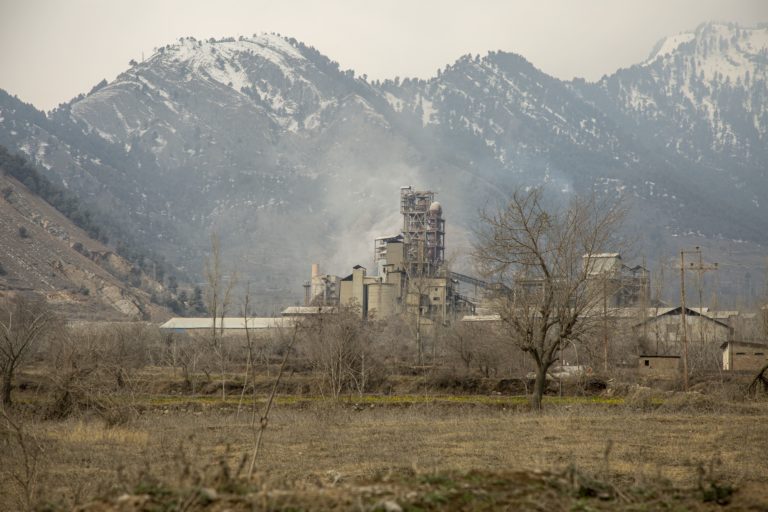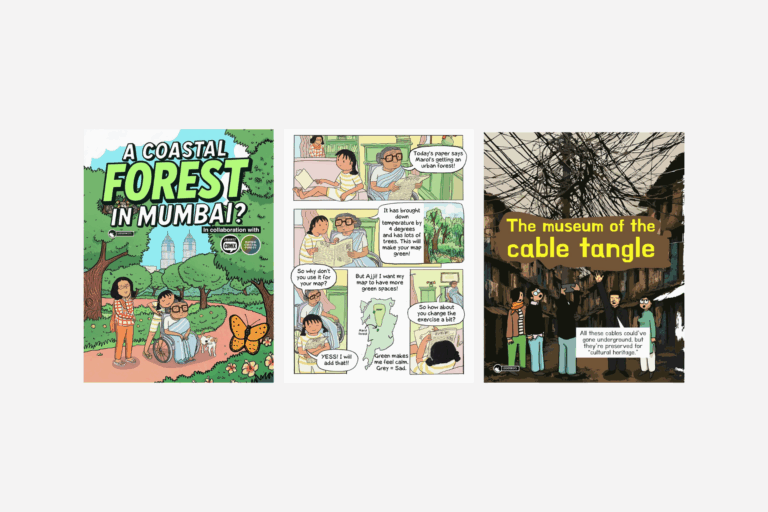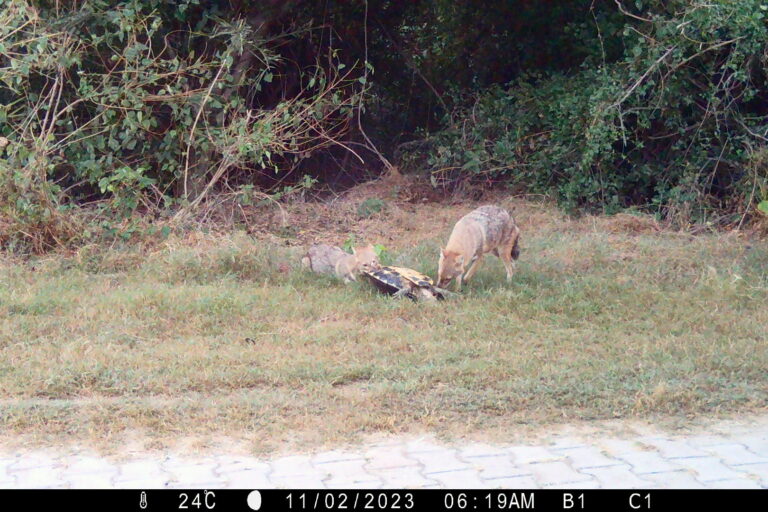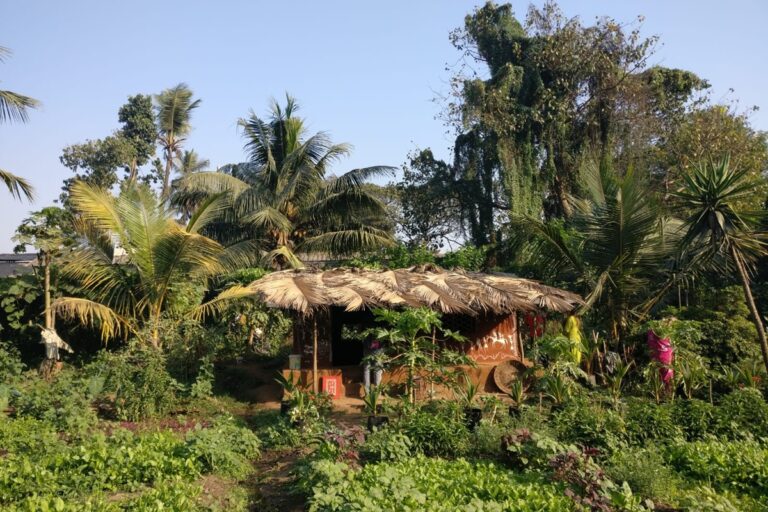- The air quality of Kashmir deteriorates drastically during winter, leading to health concerns for residents.
- According to a study, 4,750 people per 100,000 population suffer from chronic obstructive pulmonary diseases, with air pollution being the leading risk factor.
- Biomass burning, coal-based heaters, vehicular combustion, brick kilns and cement factories – all emit pollutants that contribute to the high levels of particulate matter in the air.
It was a foggy afternoon in December, and people – young and old – were walking uphill to reach the Chest and Disease (CD) hospital at Dalgate, Srinagar. Visibly straining, few paused momentarily and took deep breaths, creating fleeting, misty clouds in the cold air. Inside, the OPD was full of coughing and panting patients, waiting to see a doctor.
This is not an isolated day. Over the years, this hospital in the Kashmir Valley has witnessed a rise in patients with respiratory illnesses. The doctors say “worsening air quality” is a major risk factor behind these illnesses.
Dr. Naveed Nazir Shah, a leading pulmonologist and the head of Srinagar’s CD hospital, said, “Haze of smog is a familiar sight in Kashmir during winters, and the cold atmospheric conditions can trigger symptoms of respiratory tract infections. However, we saw a steep rise in these cases during summers as well, and the quality of air that we breathe in, has a significant part to play.” He added that long-term exposure to respiratory irritants in the air is linked to an increased risk of chronic obstructive pulmonary disease (COPD) and other lung diseases.
Around 10,000 people die in Jammu and Kashmir (J&K) every year due to diseases attributable to air pollution, the Director of Sher-i-Kashmir Institute of Medical Sciences (SKIMS), Dr. Parvaiz Koul, said, while speaking on the sidelines of the launch of Doctors for Clean Air and Climate Action, J&K chapter. At the event, Dr. Koul gave a detailed presentation on air pollution and lung diseases. He said, “Pollution is affecting every organ of our body. Srinagar city has the highest incidence of lung cancer in the country, and J&K has a high prevalence of lung diseases, and air pollution is a major risk factor for the ailments.”
COPD is a chronic inflammatory lung disease that blocks the airway and makes it difficult to breathe. It is typically caused by long-term exposure to irritating gases or particulate matter. According to WHO, the disease is the third leading cause of death worldwide.
A 2018 study that examined the contribution of chronic respiratory diseases to the deaths and disabilities in India, found J&K to be among the top four states with a growing prevalence of COPD. It indicated that, in J&K, over 4,750 people per lakh (100,000) population suffer from COPD, with air pollution being the leading risk factor.
Paradise polluted
Bashir (name changed), 42, a resident of Khrew area in Pampore town – the cement manufacturing hub of Kashmir – was diagnosed with allergic bronchitis. He said that doctors were quick to identify “the high levels of dust exposure” as a major risk factor for his disease. “The area remains wrapped in a grey shroud. Our children breathe cement dust every day, and not just me; hundreds of other people in my neighbourhood suffer from different diseases due to the polluted air,” Bashir said.
Dr. Nazir and his team at CD hospital frequently witness patients from pollution-prone areas like Khrew and Khonmoh villages of Pampore and Budgam district of Kashmir. “Patients have an exacerbation of their symptoms if they come from such areas. Quarrying, cement factories, brick kilns, and other allied activities can add to the toll of patients suffering from occupational lung diseases,” he told Mongabay-India.

The air quality of a valley with high mountains, green meadows, and forests is perceived to be pure and fresh, but studies have found that on certain days, thepollution in Kashmir can be worse than that in a metropolitan city. According to the figures for 2016, Srinagar city was declared the 10th most polluted in the world by WHO.
A 2018 study titled Winter Burst of Pristine Kashmir Valley Air jointly conducted by a team of scientists from the Indian Institute of Tropical Meteorology and the University of Kashmir, shows that pollution in Srinagar hits dangerous levels during winter months as the air carries five times more tiny particulate matter (PM2.5) than the permissible limit.
The study indicates that the emissions due to domestic coal usage account for 84% (1246.5 tons/year) of the total annual emission, followed by the emissions from vehicular combustion that is 220.5 tons/year. The least are the emissions from fuel wood burning that is around 8.06 tons/year.
According to the earth scientist Shakil A. Romshoo, because of a massive increase in the land under horticultural use over the years, large-scale pruning of trees in the months of October and November takes place. In the absence of any other expertise, people habitually burn foliage to make charcoal. “Use of traditional fire pots ignited by charcoal and bukharis (coal-based heaters) add to the overall pollution,” Romshoo said.
In another study, co-authored by Romshoo, the researchers observed a high PM2.5 and PM10 load during autumn and winter, with major contributions from anthropogenic source emissions that are aggravated by the geomorphic and meteorological set-up of Kashmir valley.
According to NASA earth observatory, Kashmir valley is enclosed by high mountain ranges on all sides that can trap air. It is possible for the high ridges to create airflow patterns that concentrate smoke and other airborne pollutants close to the valley bottom, resulting in haze outbreaks.
This situation is more likely to develop in winter when a layer of cool air at the surface is overlain by a layer of warmer air – a phenomenon known as temperature inversion in meteorology. The elevated levels of emissions like biomass and coal burning, fossil fuel combustion, and suspension of road dust aggravate the winter period and particulate Pollution.
“The combined effect of cold weather conditions and biomass and coal burning, fossil fuel combustion, vehicular emissions, etc., lead to the accumulation of particulate matter (PM) in the lower atmospheric levels. With a temperature inversion in place, air in the valley becomes stagnant. The thick layer above it acts as a cap and prevents pollutants from dispersing,” Romshoo told Mongabay-India.
According to the figures from the traffic department, the number of vehicles registered in Jammu and Kashmir is more than 1.6 million, which has considerably gone up from 6,68,445 in 2008.
Officials at the Jammu and Kashmir Pollution Control Committee (JKPCC) blame the unplanned vehicular system for a noticeable impact on the quality of air.
A 2018 preliminary study on air quality of Srinagar by researchers from S.P. college and G.D. college in Srinagar, revealed a higher concentration of NO2 at City Centre, Lal Chowk, which is a commercial area the city. Vehicular emission could be one of the reasons for a higher value of NO2, it said. SO2 exhibited high concentration in industrial areas and could be attributed to the burning of fossil fuels in industries and the use of generator sets.

“A considerable rise in the number of public and private vehicles operating in the city results in a high concentration of pollutants in the air,” said Fayaz Ahmad, a scientist with JKPCC. He also said that the high cost of LPG and a dearth of electricity in Kashmir forces people to continue the use of conventional sources of heat during winter.
Srinagar is one of the two capital cities in J&K that has been declared as a Non-attainment city (NAC) in the J&K action plan under the National Clean Air Program (NCAP). Non-attainment cities are those that have fallen short of the National Ambient Air Quality Standards (NAAQS) for over five years.
Rafi Ahmad Bhat, Regional Director, JKPCC, while talking about the measures that the department is taking to control air pollution, said that they are continuously monitoring the ambient air quality in Srinagar at different stations to assess the level of air pollutants. JKPCC has also imposed a moratorium on the air-polluting cement industries in some areas for a period of two years since 2020 after conducting a carrying capacity study.
“Sensitising the masses by conducting various outreach programmes, plantation drives, mandating electric ovens at eateries, notifying brick kilns and other factories to adapt smokeless and cleaner fuels are some of the other steps taken to reduce the particulate matter concentration,” Bhat said.
He also suggested proper vehicular management to reduce the levels of pollution in the city.
Read more: Hangul in Kashmir is facing the threat of extinction as its habitat shrinks
Banner image: A man burning leaves to make charcoal in Mughal Garden, Bijbehara. Photo by Farzana Nisar.














